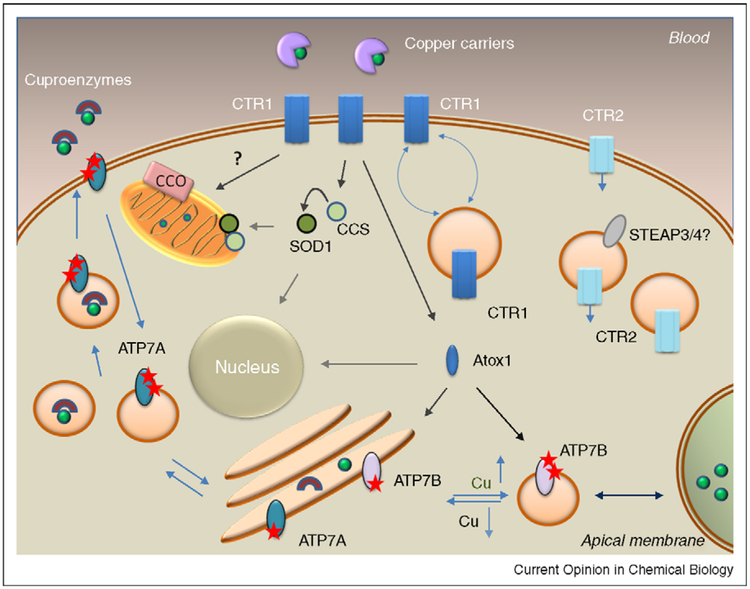Figure 1.
Copper distribution pathways in a generalized mammalian cell. CTR1 accepts cooper from the extracellular copper carriers and transfers copper into cytosol; changes in copper levels induce reversible trafficking between the plasma membrane and intracellular vesicles. CTR2 is predominantly intracellular but can be found at the plasma membrane. Entering copper is either binds directly or is retrieved from CTR1/CTR2 by copper chaperones that have multiple functions; CCS distributes copper to SOD1 in cytosol and mitochondria, while Atox1 transfers copper to the secretory pathway and nucleus. An ensemble of proteins regulates copper delivery to cytochrome c oxidase (CCO) in mitochindria. Cu-ATPases transport copper to the secretory pathways for incorporation into cuproenzumes and mediate copper excretion by sequestering excess copper in vesicles. The trafficking of Cu-ATPases between these two locations is associated with phosphorylation by a kinase (indicated by stars), which increases in response to copper elevation.

